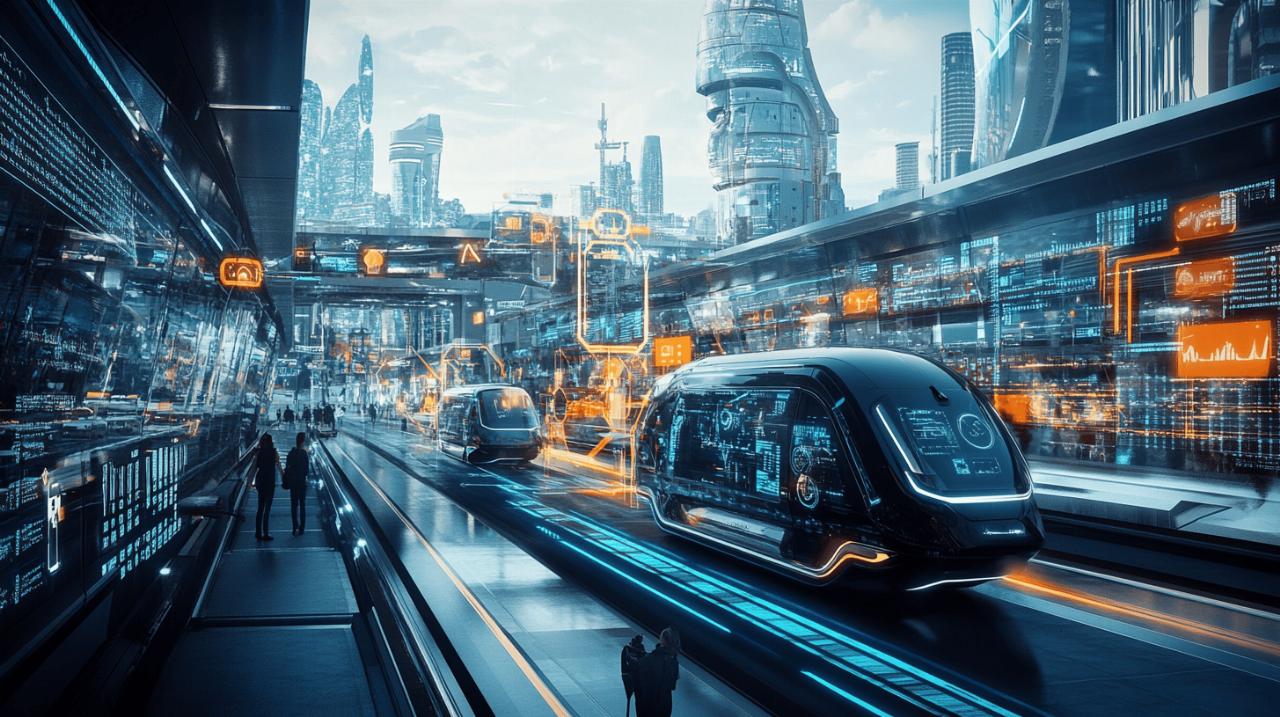The digital revolution has fundamentally reshaped how we interact with technology, and nowhere is this more evident than in the realm of transportation. Connected mobility represents one of the most significant transformations in how people and goods move around in our increasingly networked world. As vehicles become smarter and infrastructure more responsive, we're witnessing a paradigm shift that promises to make transportation safer, more efficient, and more sustainable.
Transforming transportation networks through digital innovation
The automotive industry is experiencing unprecedented change as digital technologies revolutionise traditional transportation systems. Auto Hannover and similar automotive conferences in Munich have become critical platforms where industry leaders showcase innovations in connected mobility. These events facilitate valuable networking opportunities for manufacturers, service providers, and technology vendors to discuss advancements in vehicle networking and autonomous driving capabilities. For every attendee at these conferences, some organisers even pledge to plant a tree in developing countries, highlighting the growing connection between mobility innovation and environmental sustainability.
Smart infrastructure and urban mobility solutions
Digital transformation has enabled the development of intelligent transportation infrastructure that communicates with vehicles and traffic management systems. Companies like Yunex Traffic are pioneering solutions that leverage the Internet of Things (IoT) to create safer and more efficient mobility environments. Their Vehicle2X Communication systems allow real-time information exchange between vehicles and infrastructure, significantly improving traffic flow and reducing congestion. The deployment of 101 C-ITS (Cooperative Intelligent Transport Systems) Roadside Units in the Czech Republic demonstrates how European nations are investing in smart infrastructure to support connected vehicles and sustainable transport initiatives.
Urban mobility solutions are increasingly focused on creating seamless, multimodal transportation networks. Digital platforms now enable users to access various transportation options, from electric vehicles to public transport, through integrated mobility apps. These systems are designed to encourage a shift towards greener transportation options, addressing environmental concerns while improving the overall efficiency of urban transport networks.
Integration of Real-time Data Systems in Transport Management
The backbone of connected mobility is the vast amount of data generated and processed in real-time. Advanced traffic management systems now incorporate AI to analyse traffic patterns, predict congestion, and optimise signal timing. This integration of real-time data enables transport authorities to respond dynamically to changing conditions, reducing journey times and improving the overall user experience. With proper implementation, these systems could help prevent up to 60,000 serious accidents and potentially save thousands of lives annually, according to industry projections.
Economic benefits from these advancements are substantial. Reports suggest that widespread adoption of Connected and Autonomous Mobility (CAM) technology could generate an annual economic boost of £66 billion by 2040 in the UK alone. This growth would span multiple sectors, with on-road logistics potentially generating £15.2 billion in annual revenue, passenger services contributing £3.7 billion, and off-road logistics adding another £2.3 billion. Such economic impact underscores why governments across Europe have invested over £600 million in CAM testing since 2015.
The Evolution of Vehicle Connectivity and Autonomous Systems
 The progression from traditional vehicles to connected and autonomous transportation represents one of the most significant technological leaps in the automotive industry. This evolution encompasses everything from basic driver assistance features to fully autonomous vehicles capable of navigating complex environments without human intervention. Vehicle connectivity has transformed not just how cars operate but also how they're maintained, with diagnostic systems that can predict maintenance needs before components fail, maximising the lifespan of car parts.
The progression from traditional vehicles to connected and autonomous transportation represents one of the most significant technological leaps in the automotive industry. This evolution encompasses everything from basic driver assistance features to fully autonomous vehicles capable of navigating complex environments without human intervention. Vehicle connectivity has transformed not just how cars operate but also how they're maintained, with diagnostic systems that can predict maintenance needs before components fail, maximising the lifespan of car parts.
From driver assistance to fully autonomous vehicles
The journey toward autonomous driving has progressed through several distinct levels of automation. What began with basic cruise control has evolved into advanced driver assistance systems that can maintain lane position, adjust speed, and even perform emergency braking. Today's most advanced vehicles incorporate sophisticated sensors, cameras, and AI processing capabilities that allow them to perceive their environment and make driving decisions. This progression is creating new challenges for vehicle licensing and insurance frameworks, as traditional approaches must adapt to vehicles where responsibility gradually shifts from human drivers to automated systems.
Economic forecasts suggest that CAM technology could create approximately 342,000 new jobs by 2040, including 12,250 positions in car manufacturing alone. However, realising this potential requires supportive government policies and new legislation. Insurance companies are also developing innovative approaches to coverage that account for the changing risk profiles of increasingly autonomous vehicles, moving away from traditional models that focus primarily on driver behaviour.
Connectivity features reshaping the user experience
Modern vehicles are becoming extensions of our digital lives, with connectivity features that transform the driving experience. From seamless integration with smartphones to voice-controlled infotainment systems, cars now offer digital experiences comparable to other consumer technology products. These systems enable drivers to access navigation, entertainment, and communication services without diverting attention from the road. When USB sticks aren't recognised in these systems, it creates significant frustration for users who have come to expect perfect digital integration in their vehicles.
Vehicle connectivity extends beyond entertainment to include practical applications that enhance safety and convenience. Remote diagnostics allow manufacturers to identify and sometimes resolve issues without requiring a visit to a service centre. Over-the-air updates enable cars to receive new features and security patches throughout their lifecycle, similar to smartphone updates. These capabilities are particularly valuable for electric vehicles, which rely heavily on software to manage battery systems and power delivery. As the automotive industry continues to embrace these digital innovations, the boundaries between technology companies and traditional car manufacturers increasingly blur, creating new competitive dynamics and partnership opportunities in the mobility ecosystem.

